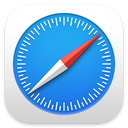French II - FRE200 Fall 2025
Course
About
French 2
Course code: FRE 200
Semester and year: Fall 2025
Day and time: Mon, Wed 08:00 – 09:15
Instructor: Culioli Marc
Instructor contact: marc.culioli@aauni.edu
Consultation hours: I do not have an office at AAU, but students can arrange to meet me after class. I will always be available on Mondays and Wednesdays (09:15-10:15).
-
Course Description
The pedagogical approach adopted here, generally speaking, is an action-oriented one, focusing on the development of the four language-acquisition skills (listening, reading, speaking, writing) together with thorough and in depth learning of the French language.
Students will learn the basics of French language through the study of oral and written materials. A particular emphasis will be given to specific exercises comprising grammar, vocabulary, phonetics to enable students to conceptualise the way language works.
Throughout the course, students will be exposed to the peculiarities of French culture and civilisation including an overview of famous French towns and cities, or getting to know when to use formal forms of address in daily communication. In general terms, this course is oriented towards delivering an all-round practical knowledge comprising grammar, skills, vocabulary and real-life functional language.
-
Student Learning Outcomes
-
After completing this course, students will be the second half way to A1(Breakthrough) level, which is the first level in the Common European Framework of Reference for Languages.
-
At the end of French II students will be able to:
-
understand and use familiar everyday expressions to satisfy needs of a basic type;
-
interact in a simple way;
-
analyze and test out new grammar strategies in listening, writing and speaking comprehension;
-
use new conversational routines;
-
arrange a meeting;
-
describe the place where they work and live;
-
speak about past and future activities;
-
Reading Material
The teacher will provide the learning material needed for the course.
-
Teaching methodology
The main characteristic of this course is the emphasis on establishing basic conversational skills. Therefore, the approach adopted is based on communicative methodology, i.e. the students should have many opportunities to speak and to practice the language by mastering its idioms. An idiom is not a sum of isolated words but a web of contextual and intentional linguistic activities. The students will learn to interact by using role-playing games and creativity exercises. The indispensable grammar base of the French language will be acquired in a simplified form. Furthermore, the concept of systematical and continuous language learning will be realized by regular homework assignments, vocabulary quizzes, and permanent learning-by-doing training.
-
Course Schedule
-
Course Requirements and Assessment (with estimated workloads)
*1 = Critical Thinking; 2 = Effective Communication; 3 = Effective and Responsible Action
-
Detailed description of the assignments Quizzes :
Assessment breakdown
1. Quizzes
Quizzes will either be oral or written (4) They will focus on material covered in preceding sessions. The instructor will guide students on specific areas in preparation for the quiz; however, students should be aware that anything that has been covered prior the quiz can be part of it.
2. & 3. Midterm and Final examinations:
Both midterm and final examinations will cover the entire material taught prior to the
examination during the semester. Each examination will have four parts: written
comprehension, oral comprehension, written production, oral production, and language
structure.
Assessment breakdown
4. Participation:
Active participation in class discussion is considered to be compulsory and necessary for the
fundamental acquisition of the language. Participation extends beyond mere attendance. A track of how active and willing students are to communicate and participate in French will be
kept and used for the calculation of the final grade
Assessment breakdown
8. General requirements
All coursework is governed by AAU’s academic rules. Students are expected to be familiar
with the academic rules in the Academic Codex and Student Handbook and to maintain the
highest standards of honesty and academic integrity in their work. Please see the AAU
intranet for a summary of key policies regarding coursework.
Course specific requirements
There are no special requirements or deviations from AAU policies for this course.
Use of Artificial Intelligence and Academic Tutoring Center
The use of artificial intelligence tools to search sources, to process, analyze and summarize
data, and to provide suggestions or feedback to improve content, structure, or style,
defined here as AI-assisted writing, is not in itself plagiarism. However, it is plagiarism if, as
a result, it obscures the authorship of the work produced or the degree of its originality (see
the examples above).
AAU acknowledges prudent and honest use of AI-assisted writing, that is, the use of AI for
orientation, consultation, and practice is allowed. For some courses and assignments,
however, the use of AI is counterproductive to learning outcomes; therefore, the course
syllabus may prohibit AI assistance.
A work (text, image, video, sound, code, etc.) generated by artificial intelligence based on a
mass of existing data, defined here as AI-generated work, is not considered a work of
authorship. Therefore, if an AI-generated work (e.g., text) is part of the author’s work, it
must be marked as AI-generated. Otherwise, it obscures the authorship and/or the degree
of originality and thus constitutes plagiarism. Unless explicitly permitted by the instructor,
submission of AI-generated work is prohibited.
If unsure about technical aspects of writing, and to improve their academic writing, students
are encouraged to consult with the tutors of the AAU Academic Tutoring Center. For more
information and/or to book a tutor, please contact the ATC at:
http://atc.simplybook.me/sheduler/manage/event/1/.
9. Grading Scale
* Decimals should be rounded to the nearest whole number.
Prepared by and when: Marc Culioli, 19.08.2025.
Approved by and when: Dr Silviya Lechner 23.08.2025




.png?lmsauth=aeb003561ff92466c0363039bcfbf9b70d9841ad)